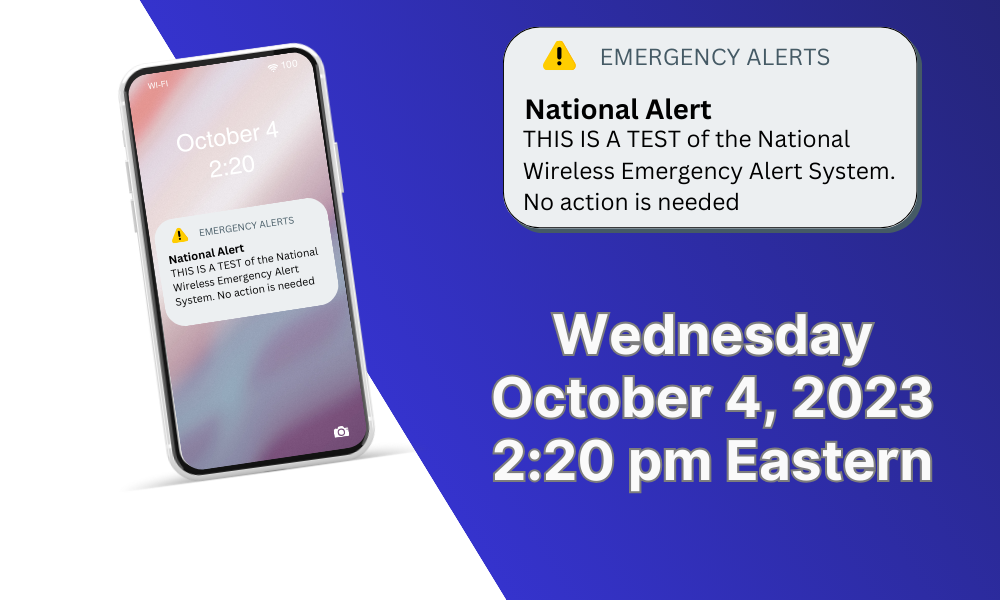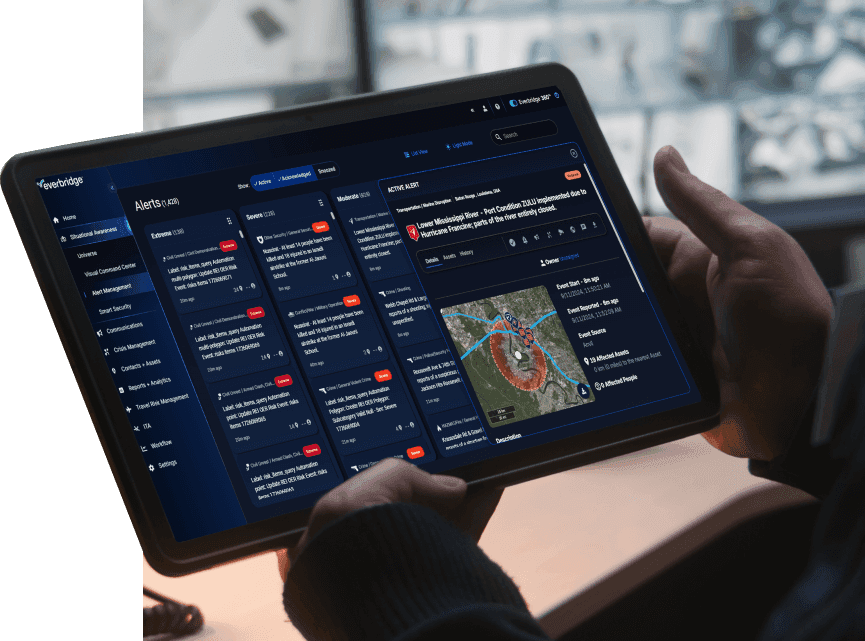By Brian Toolan, Everbridge VP Global Public Safety
On Oct. 4, 2023, the Federal Emergency Management Agency (FEMA) plans a nationwide mobile alert test which will send an emergency SMS to all cellphones in the United States.
In coordination with the Federal Communications Commission (FCC), the national test will be administered at approximately 2:20 p.m. ET on Wednesday, Oct. 4. It will consist of two portions that will test Wireless Emergency Alerts (WEA) and Emergency Alert System (EAS) capabilities.
The WEA portion of the test will be directed to all consumer cell phones. The messaging will be displayed in either English or Spanish, depending on the language settings of the phone. The EAS portion of the test will be sent to radios and televisions.
FEMA and the FCC are coordinating with EAS participants, wireless providers, emergency managers, and others to prepare for this national test to minimize confusion and to maximize the public safety value of the test.
“The purpose of the test is to ensure that the systems continue to be an effective means of warning the public about emergencies, particularly those on the national level,” the FEMA website reads. “In case the Oct. 4 test is postponed due to widespread severe weather or other significant events, the backup testing date is Oct. 11.”
Importance of testing emergency warning systems
Emergency warning systems are essential for keeping people safe during natural disasters, public health emergencies, and other crises. But even the best systems can fail or falter if they’re not regularly tested. That’s why it’s important to regularly test emergency warning systems to make sure they’re working properly.
There are several reasons why it’s important to test emergency warning systems.
1. Testing helps to identify any potential problems with the platform. For example, a test may reveal that the system is not reaching all the intended recipients, or that the messages are not being delivered in a timely manner. By identifying these problems during a test, emergency managers can take steps to correct them before a real emergency occurs.
2. Ensure that people are aware of the emergency warning system and know how to use it. When people receive a test message, it’s an opportunity to remind them about the system and how to respond to a disaster. This can help to ensure that people are prepared to take action if they receive a real emergency message in the future.
3. Build public confidence in the early warning system. When people know that the system is working properly, they’re more likely to trust it and act when they receive an alert. This is especially important during a real crisis when people need to be able to act quickly and decisively.
Challenges of testing EWS
Of course, there are some challenges associated with testing emergency warning systems. It is critical that testing reveals any limitations to reaching populations effectively, whether that is technology gaps or challenges with a particular end-user device.
Another challenge is that people can sometimes get fatigued by tests or irritated by them. They may even unsubscribe entirely to the early warning system. No one wants to receive an emergency alert when there’s not actually an emergency. But it’s important to remember that the purpose of a test is to ensure that the emergency warning system is working properly when it’s needed most. If people unsubscribe from emergency alerts because they’re annoyed, it could make it more difficult for emergency managers to reach them in the event of a real emergency.
In the past, emergency warning systems were often limited to radio and television broadcasts. But today, there are a variety of other ways to deliver emergency alerts, including mobile apps, text messages, and social media. Nearly everyone has a device in their pocket that can potentially save their life. The strides in technology over the past 20 years have been unparalleled. But this also means that emergency managers have a wider range of options for reaching the public in the event of an emergency. And that means that there are more potential points of failure. That’s another reason why it’s so important to test all the different ways that emergency alerts can be delivered.
Overall, the benefits of regularly testing emergency warning systems far outweigh the challenges. By testing these systems, emergency managers can help to keep people safe, build public confidence in the system, and bring us one step closer to being prepared for a real emergency.
Best practices for emergency warning system testing
Finally, for emergency managers, here are some best practices for conducting effective emergency warning system tests:
- Plan ahead and make sure that everyone who needs to be involved is aware of the test schedule.
- Send out clear and concise instructions to the public about what to expect during the test.
- Monitor the test closely and be prepared to take corrective action if necessary.
- After the test, analyze the results and make any necessary changes to the system.
By following these steps, emergency managers can help to ensure that their warning systems are ready to protect the public.

